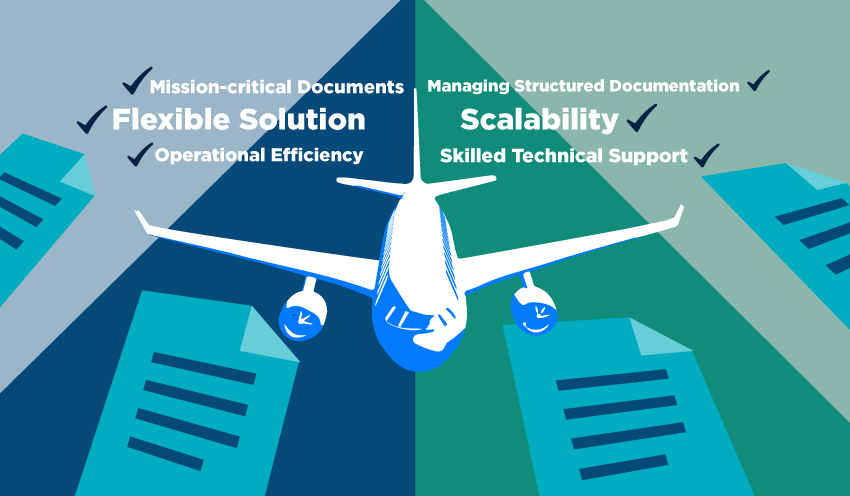The global pandemic has had an unparalleled and devastating impact on the aviation industry, with a dramatic decline in demand, drastic reduction of fleets, significant headcount reductions and an accelerated closure of airlines. However, as airlines begin to return to a ‘new normal’ - how can they adapt to the new reality – becoming leaner, stream-lined and more operationally efficient?
Adapt and emerge
While the impacts of COVID-19 have been rapid, far-reaching and severe, epidemiologists are confident that they will not be permanent. As with all previous global pandemics, this one will eventually end and airlines will need to adapt and extend new ways of operating to drive continued recovery and unlock future value for sustainable growth. Therefore, operational departments need to review and re-evaluate their technologies, processes and resources to ensure a lean, optimised and sustainable airline moving forward.
When reviewing those areas where operational efficiency can be improved easily, it is not uncommon just to pick upon the large budget items such as staff, aircraft orders and route options. Often overlooked are day-to-day aspects of the operation that are not working as efficiently as they should be,and if viewed objectively, are ‘quick wins’ for the bottom-line financials of the airline.
An outsourced, enterprise-wide document management solution, for example, is an innovative operational solution and a cost optimiser that is proven to directly support the airline’s cost transformation efforts, operational stability, risk mitigation, among other key benefits.
Resource Optimisation
With uncertainties surrounding customer demand, operational departments need to ensure their resources are fully focused on critical and value adding business activities.
The process of managing operational documentation in-house, for example, can be complex and time consuming, as departments use multiple tool sets across different fleet types, for the management of content, distribution and viewing. Fragmented landscapes such as this, often lead to a bottleneck of activity during OEM updates, and the likelihood of escalating infrastructure costs and constant training and software requirements.
By outsourcing the complexities associated with managing technical documentation, airlines will have access to a skilled team of content engineering experts, who not only eliminate the burden associated with managing structured documentation, but will also leverage its power to deliver greater usability for end-users. As such, this ensures technical pilots will be assisted in their subject matter or technical writer roles - immediately increasing their value within the organisation and allowing them to focus on the core business operations that matter most.
FREE INSIGHT: Aviation Document Management System Selection Guide >
Agility and Flexibility
With increased uncertainty, airlines need to be able to adjust to potential peaks and troughs in demand. Therefore, having an agile and flexible process for managing operational documentation has become even more crucial. As previously noted, handling structured documentation such as XML is an incredibly intensive process for in-house operational departments, especially when running against the audit clock, meeting different regulatory bodies’ requirements AND having to manage revisions and releases from aircraft suppliers. Not to mention the stress of trying to manage this all in-house on top of other operational needs.
For post holders, scaling up technically trained staff is hard enough, but when these peak periods cool down, reallocating staff can be even harder, and you are left paying for surplus costs.
By adapting to an outsourced document management solution, airlines will benefit from the full support of an extended team as and when you require their technical knowledge for your document updates and delivery, thus eliminating any surplus costs on underutilized staff.
An Outsourced Solution
In this current environment, thought-leading airlines are reassessing all areas of their operations in order to adapt how they fundamentally operate and this applies to document management. Whilst inevitably, some airlines will choose to operate as they always have, reverting to outdated and cumbersome technology and slow in-house processes. Those airlines who recognise the value of an outsourced document management solution in this new environment, will undoubtedly achieve a step-change in cost reduction, optimise operational efficiency, and at the same time, leverage the power of structured data.
About Vistair
Working with 30 + aviation organisations worldwide, Vistair has the industry expertise, the right balance of technology solutions and deep unrivaled understanding of the industry’s processes to make sense of the changes that will face our industry. We have always followed a collaborative approach, one that builds trust with all industry players. We are continuously working side by side with our customers to support them on the road to recovery, employing our technology to meet current and future needs as we rethink flight operations together.
If you’re unsure what makes an optimal, reliable and compliant document management system, download our free insight ‘Aviation Document Management System Selection Guide’ to learn what you need to consider.
